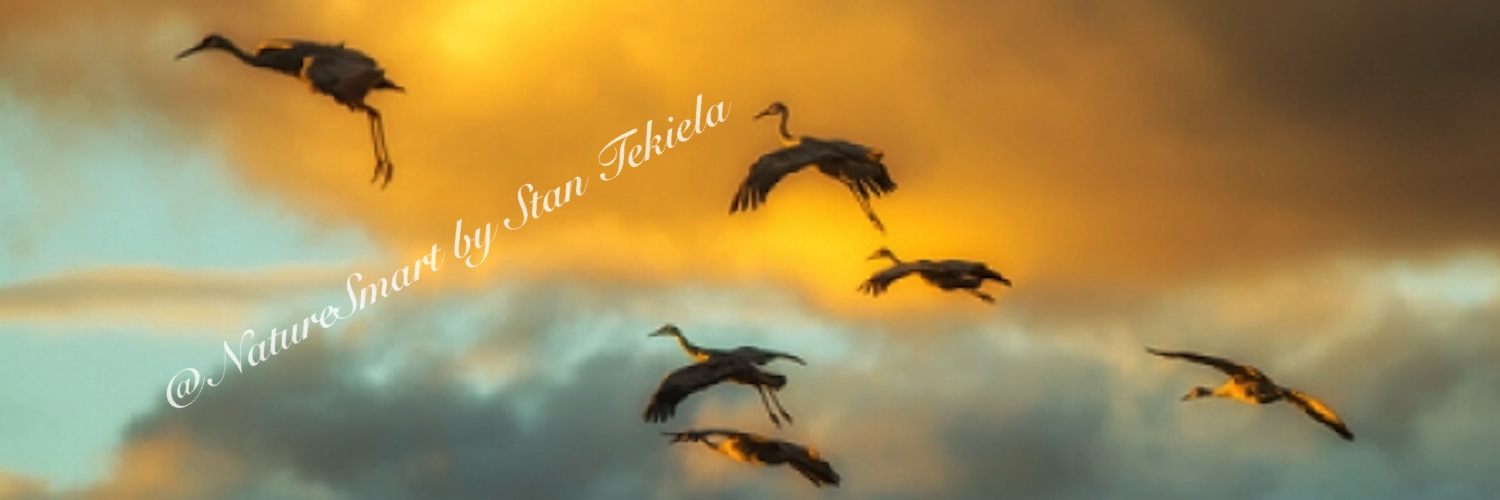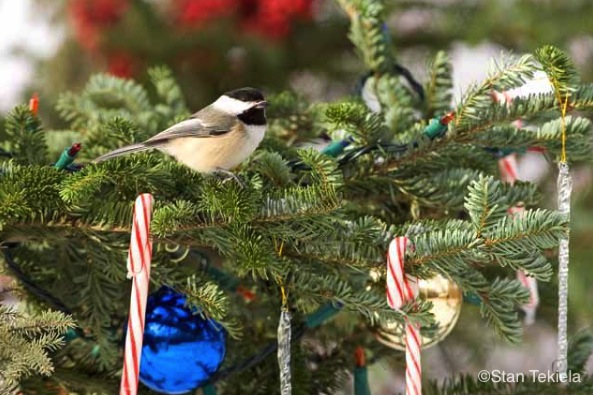
The Christmas Tree Conundrum
Just in time for Christmas, Stan Tekiela, author and wildlife photographer for many Adventure Publications books, considers the question of which is best—a fake tree or a real one.
Are you like me? Each holiday season I ponder the whole fake tree/real tree conundrum. Which one is better for the environment? To understand this question, let’s look at some history.
The first Christmas tree lot opened on the streets of New York in 1851 when Mark Carr hauled two ox sleds loaded with trees from the Catskill Mountains into town. Today, about half a million acres of land are used by 22,000 Christmas tree growers, according to the U.S. Department of Agriculture. These tree farmers produce more than 32 million trees each holiday season.

The question remains: Is cutting down a tree for temporary use in your home during the holidays good or bad for the environment? Let’s first look at some facts about artificial trees (which are now apparently called “permanent trees”).
About 9.3 million artificial trees are made and sold each year. About 80 percent of these are made in China. The cost to the environment in terms of how much petroleum is used in manufacturing these trees, the number of cardboard boxes for packaging the trees, and the amount of fuel for transporting the trees halfway around the world is extremely high. Consider this: The life span of the average artificial tree in the U.S. is only six years, but the life span of this same tree in a landfill is an eternity.
Before 1950, most fresh Christmas trees were cut from the wild. Obviously, cutting from the wild would be a problem if it continued today, but now 98 percent of all fresh trees are grown on tree farms. Proponents point out that farm trees offer many environmental benefits. They provide oxygen and remove carbon dioxide and other pollutants from the air while the trees are growing. They help stabilize soil, reduce flooding, and provide nesting habitat for many species of birds.
And because Christmas trees are often grown on land retired from other uses, generally fallow fields and cow pastures, they’re not supplanting older forests.
Also, when trees are planted next to natural woodland, a stand of Christmas trees creates an “edge effect” that increases wildlife diversity. Birds, such as goldfinches and cedar waxwings, and small mammals, such as rabbits and mice, find these habitats very beneficial. Bird counts have actually increased on farms that start to grow Christmas trees.
But there is a darker side to the fresh Christmas tree story. Not all Christmas trees are perfectly green as they appear. In order to produce the ideally shaped and colored trees, farmers often use large amounts of chemicals. Insecticides, herbicides, and fungicides are used when growing Christmas trees. These chemicals are highly toxic to birds, fish, and mammals, often counteracting the benefits of growing the trees. In addition, many farmers will spray the trees with a green dye to make them look greener and hold needles longer.
When we buy a Christmas tree, we don’t think about the liberal amounts of chemicals that were applied to the tree and are now sitting in our living rooms. Off gassing of the chemicals is a real concern, not to mention the effect this will have on our pets who sometimes chew the fallen needles.
Fortunately, I think there are a few things we can do as consumers. If you are purchasing a fresh tree this season, ask some questions of the grower about his practices. Are the trees organically grown? Encourage your local grower to use fewer chemicals. Most importantly, don’t expect and demand a perfectly shaped and colored tree. A Charlie Brown tree is just as lovely. Until next time…
If you enjoyed Stan’s post, you may consider one of his amazing nature books: Majestic Eagles; The Lives of Wolves, Coyotes, and Foxes; or Backyard Birds: Welcomed Guests at our Gardens and Feeders. Young readers will delight in his award-winning children’s books, such as Whose Butt?, Critter Litter, and his latest, Jump, Little Wood Ducks.
You can follow Stan on Facebook and Twitter, or contact him via his web page. Stan’s nationally syndicated NatureSmart Column appears in more than 25 cities spanning 5 states (Minnesota, Wisconsin, Michigan, Illinois, and Pennsylvania) and is circulated to more than 750,000 readers. Stan’s author page on Amazon features some amazing videos! Check them out, and follow him for updates.
For more stories about wildlife and nature, sign up for our newsletter now!
More posts from Stan:
Indigo Bunting—A Familiar Summer Visitor
The Nesting Behaviors of Sandhill Cranes
Big Birds, Baby Birds, Birds Everywhere
Stan Tekiela observes Marsh Wrens
The Magical, Mystical World of Sandhill Cranes


